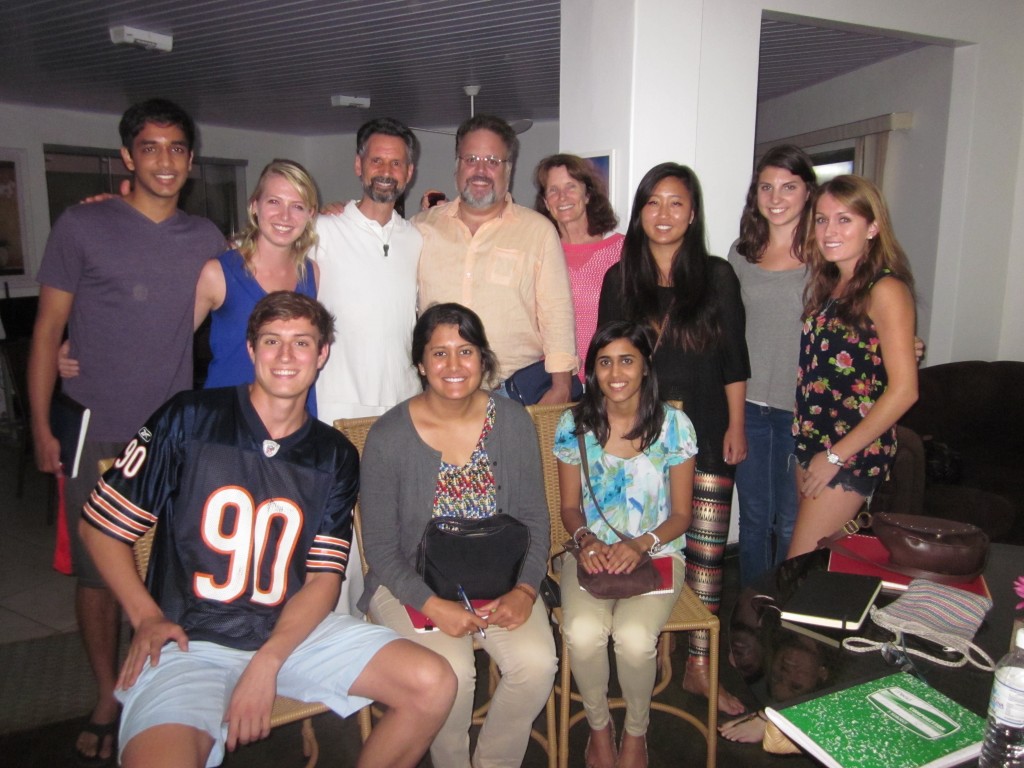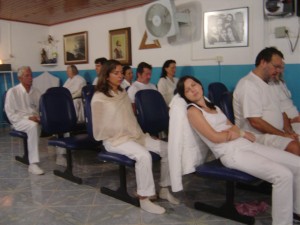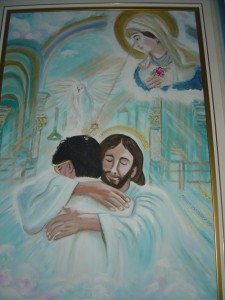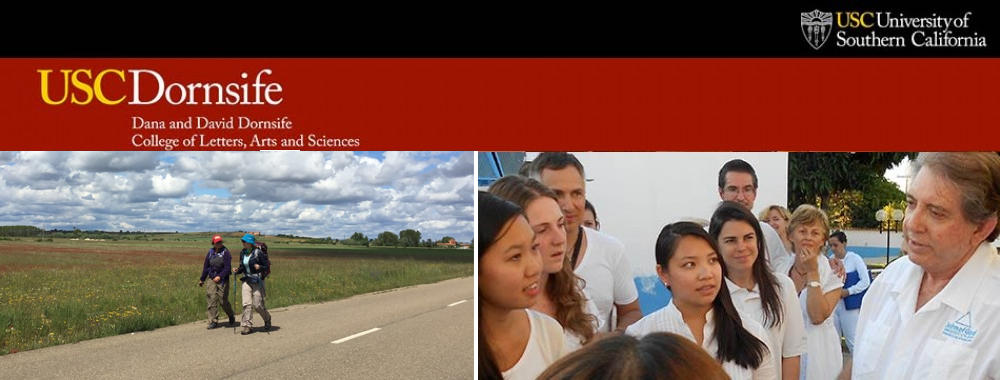by Kausar Ali, a senior double majoring in Neuroscience, B.A. and Religion, B.A.
When I first met the other seven students in the Problems without Passports class to Brazil, I immediately realized that we were an eclectic group. We were an amalgam of different faiths and cultures, identifying with Hinduism, Islam, Judaism, Episcopalian Christianity, Catholic Christianity, non-denominational Christianity, and Atheism. In addition, we were Indian, Pakistani, Chinese, and Euro-American. We were all studying distinct fields: anthropology, fine arts, international relations, religion, occupational therapy and neuroscience. Thus, I thought it would be interesting to note how my own cultural, religious, and academic background – a Pakistani Muslim pre-med student majoring in neuroscience and religion – allowed me to interpret the phenomena at the Casa de Dom Inácio de Loyola different from my peers.

Brazil PWP group 2013, with Dr. Rick , Diego and our Professor Dr. Erin Moore. We were a very diverse group. The author is seated in the front row, right.
With my Pakistani heritage, I found unique similarities with the Spiritist culture. Although a biomedical approach to treatment is predominant in Pakistan, herbal treatments and relaxation methods are still prevalent as alternative healing methods. These practices are similar to the herbal passiflora (passion flower) pills that the Entities (spirits) prescribe to Casa visitors and the hours-long meditation sessions in the current room, meditation deck, and other areas of the Casa. I found that just like in my Pakistani culture, these practices at the Casa are considered as a more natural course of treatment to supplement or enhance biomedicine rather than replace it. I found that just like in the Pakistani culture I grew up with, herbal medicine and relaxation were core elements of the Spiritist’s philosophy of living a healthy, balanced lifestyle.

Visitors in white, meditate in one of the Casa “current rooms.” Meditation is seen as a central healing modality. Photo: E. Moore
As a Muslim, I struggled with trying to fully immerse myself in the Spiritist practices. Although all religious backgrounds are welcomed into the Casa, there is a strong Christian influence on the Spiritist prayers. While most of my classmates rattled off the “Hail Mary” or the “Our Father” without even noticing their Christian connections, being a devout, practicing Muslim, I felt slightly uncomfortable during these rituals. How could I fulfill the anthropological mandate to observe and participate if I did not know any of the words to the prayers and songs and I felt as though I would be betraying my own faith. I felt an internal debate on whether or not I should even try to recite the words – to have the full Casa experience everyone talks about – or to just mentally recite my Muslim prayers.

A painting in the main Casa meditation hall depicts Mary watching Jesus embrace John of God. One of many Christian images linking John of God to Jesus at the Casa. Photo: E. Moore
On my second day at the Casa, I heard Heather Cumming, one of the Casa officials, say, “All religious backgrounds are welcome. No matter what religion you are, you can surrender to the healing process and use the time to connect with God.” I then realized that I could balance my Muslim faith with Spiritist philosophy by praying to the God of my choosing, while also engaging in the Spiritist practices of meditation, sacred waterfall, and sacred soup. Even though I came from a distinct religion and cultural background, I could still have a beneficial healing experience at the Casa. Islam has a strong spiritual component of meditation and congregational prayer to God to relieve human suffering; so, I discovered that I could use the spirituality of Spiritism to reconnect with and even enhance the spirituality I had already known in Islam.
My neuroscience and religious studies background allowed me to explore the connection between the science of medicine and spirituality. There has been a growing trend over the years where people engage in alternative spiritual healing methods, such as those at the Casa de Dom Inácio de Loyola. I have heard accounts from people I met during my Casa visit that they had positive healing experiences in which their terminal cancers and illnesses were fully cured at the Casa. Thus, I grappled with understanding the cultural and scientific significance of spirituality and medicine. How can one scientifically prove that spirituality and relaxation promotes wellness and health? Can spiritual healing be proven with the scientific method? This profound question continues to challenge my mind, and I hope to explore it further in my future medical career.
Overall, I discovered that each person who comes to the Casa de Dom Inácio de Loyola has his/her own unique experience. Their stories depend on the cultural lenses they peer through as they carry on their Casa experiences. I came in as a Pakistani Muslim, born and raised in Texas, with strong interests in the field of neuroscience and religious theology. All these elements of my cultural and academic background molded what shaped my unique experience at the Casa.
